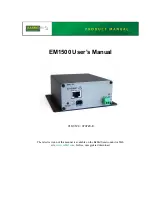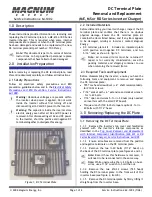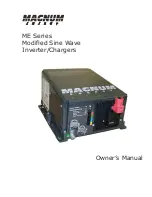
UMS4 plus
User Manual
39
USB
3.1&3.2
●
NTSC:
The colour video standard used in North America and some other parts of the world
created by the National Television Standards Committee in the 1950s. NTSC utilizes an
interlaced video signals.
●
PAL:
Phase Alternate Line. A television standard in which the phase of the colour carrier is alternated
from line to line. It takes four full images (8 fields) for the colour-to-horizontalimages (8 fields) for the
colour-to-horizontal phase relationship to return to the reference point. This alternation helps cancel out
phase errors. For this reason, the hue control is not needed on a PAL TV set. PAL, is widely used in needed
on a PAL TV set. PAL, is widely used in Western Europe, Australia, Africa, the Middle East, and Micronesia.
PAL uses 625-line, 50-field (25 fps) composite colour transmission system.
●SMPTE:
Society of Motion image and Television Engineers. A global organization, based in the United
States, that sets standards for baseband visual communications. This includes film as well as video and
television standards.
●
VESA:
Video Electronics Standards Association. An organization facilitating computer graphics through
standards.
●
HDCP:
High-bandwidth Digital Content Protection (HDCP) was developed by Intel Corporation an is
in wide use for protection of video during transmission between devices.
●
HDBaseT:
A video standard for the transmission of uncompressed video (HDMI signals) and related
features using Cat 5e/Cat6 cabling infrastructure.
●
ST2110:
A SMPTE developed standard, ST2110 describes how to send digital video over and IP
networks. Video istransmitted uncompressed with audio and other data in a separate streams.
SMPTE2110 is intended principally for broadcast production and distribution facilities where quality and
flexibility are more important.
●
SDVoE:
Software Defined Video over Ethernet (SDVoE) is a method for transmission, distribution and
management AV signals using a TCP/IP Ethernet infrastructure for transport with low latency. SDVoE is
commonly used in integration applications.
●
Dante AV:
The Dante protocol was developed for and widely adopted in audio systems for the
transmission of uncompressed digital audio on IP based networks. The more recent Dante AV specification
includes support for digital video.
●
NDI:
Network Device interface (NDI) is a software standard developed by NewTek to enable
video-compatible products to communicate, deliver, and receive broadcast quality video in a high quality,
low latency manner that is frame-accurate and suitable for switching in a live production environment over




































